Abstract
A Beijerinckia strain designated strain B1 was shown to oxidize benz[a]anthracene after induction with biphenyl, m-xylene, and salicylate. Biotransformation experiments showed that after 14 h a maximum of 56% of the benz[a]anthracene was converted to an isomeric mixture of three o-hydroxypolyaromatic acids. Nuclear magnetic resonance and mass spectral analyses led to the identification of the major metabolite as 1-hydroxy-2-anthranoic acid. Two minor metabolites were also isolated and identified as 2-hydroxy-3-phenanthroic acid and 3-hydroxy-2-phenanthroic acid. Mineralization experiments with [12-14C]benz[a]anthracene led to the formation of 14CO2. These results show that the hydroxy acids can be further oxidized and that at least two rings of the benz[a]anthracene molecule can be degraded.
Full text
PDF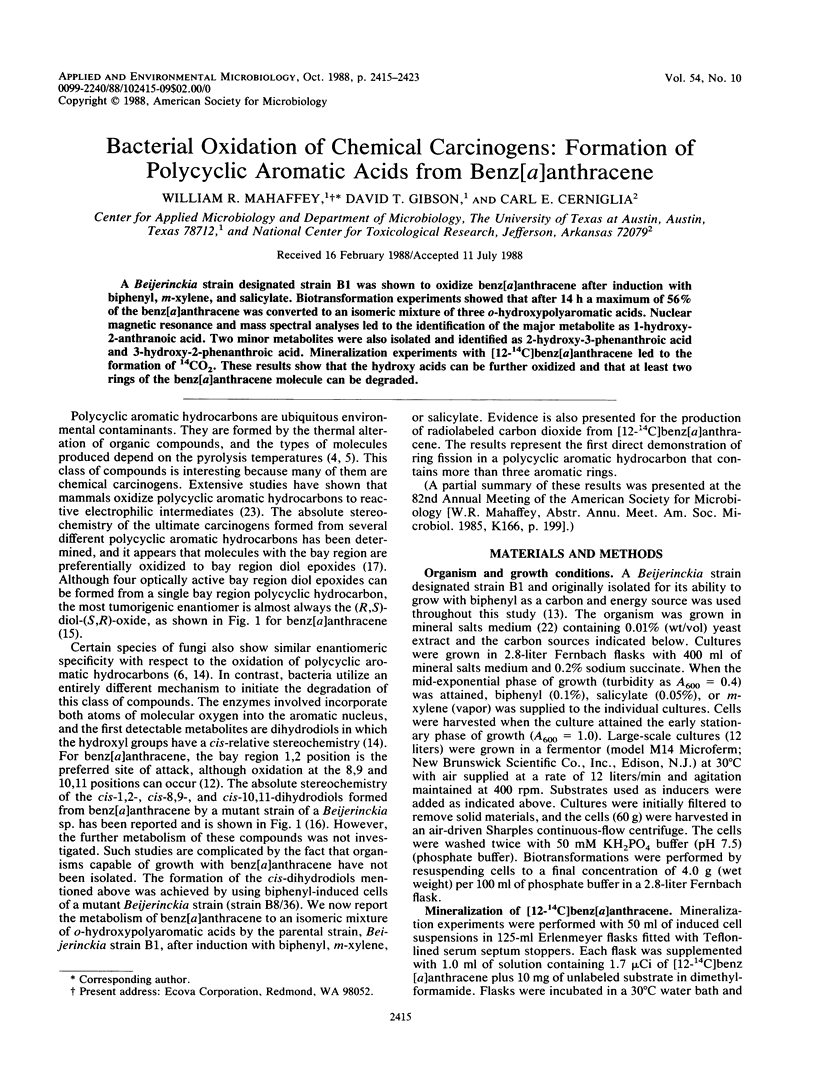
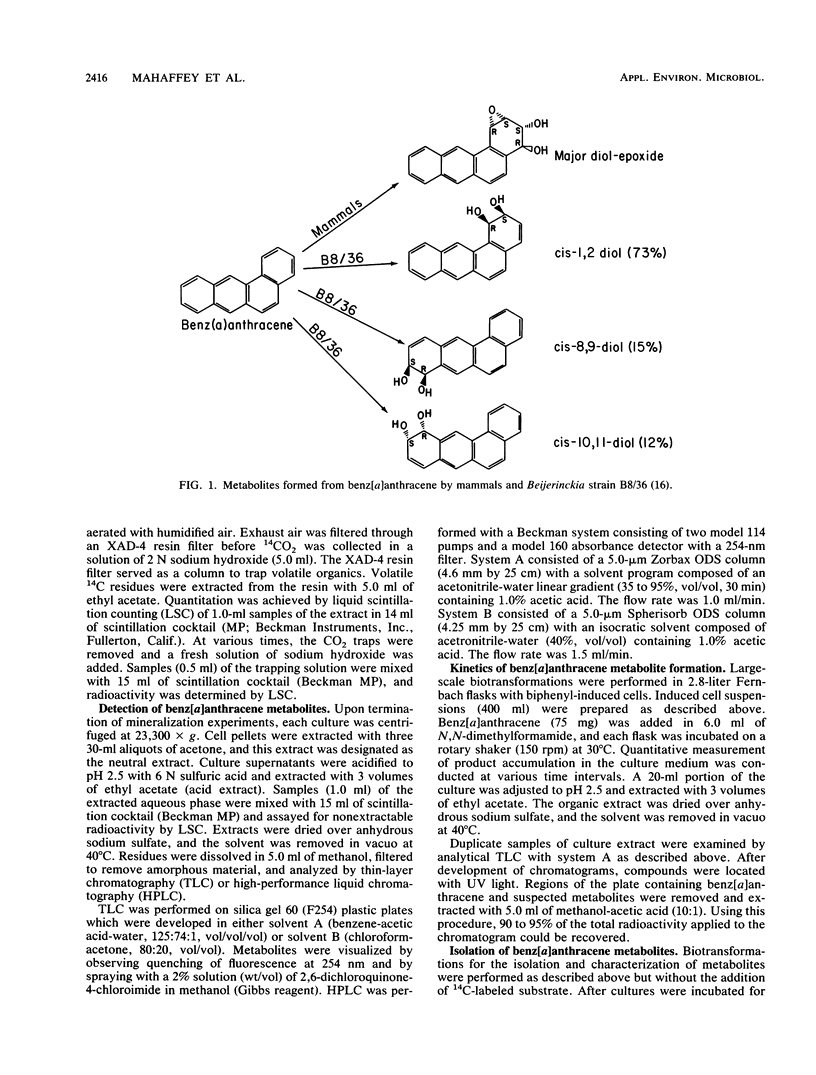
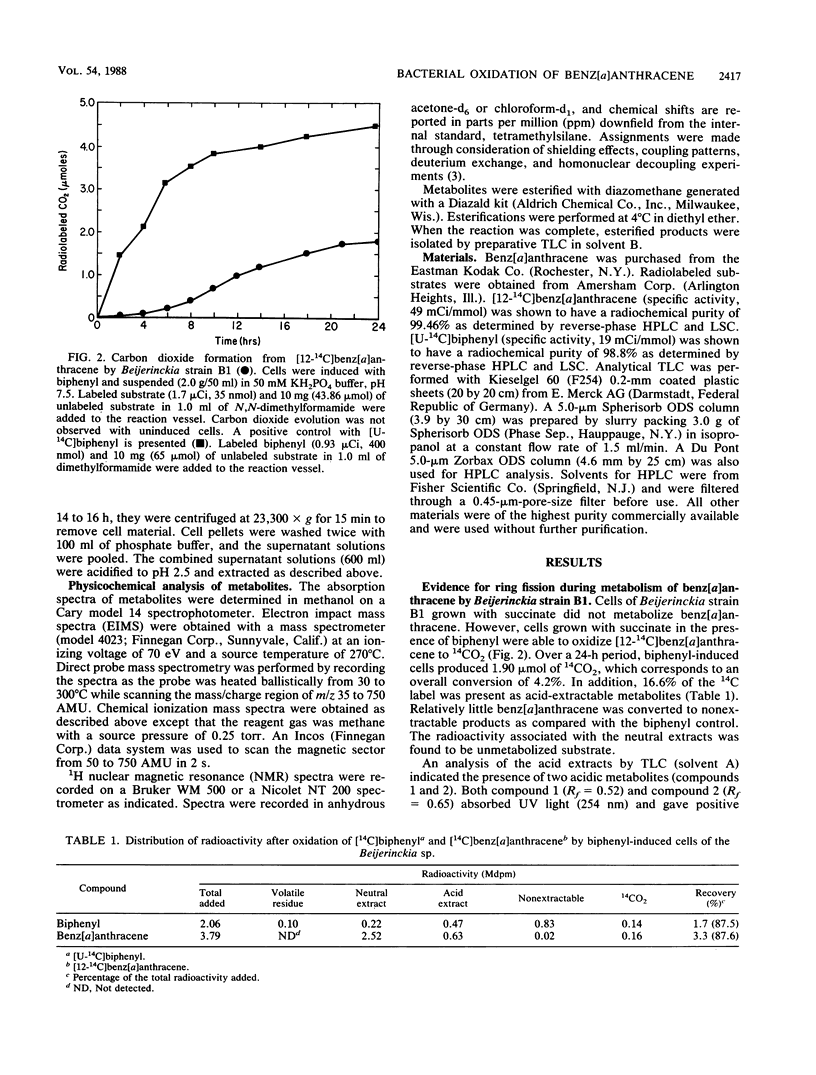
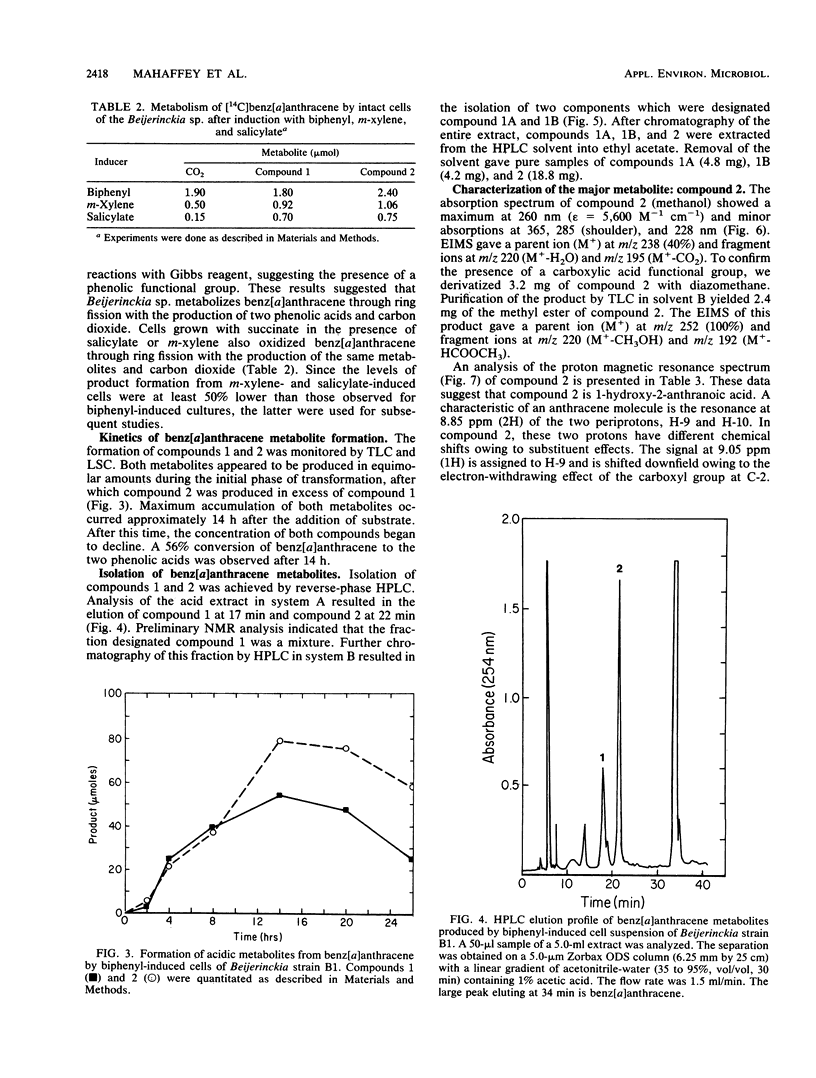
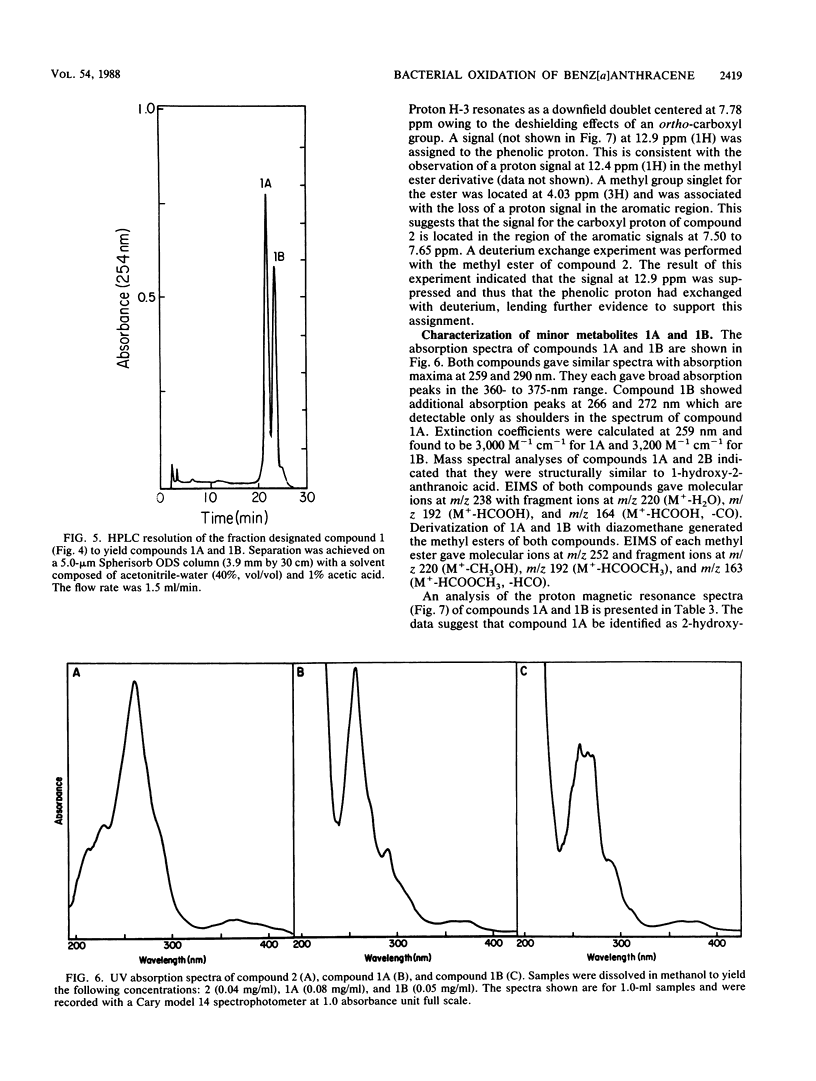
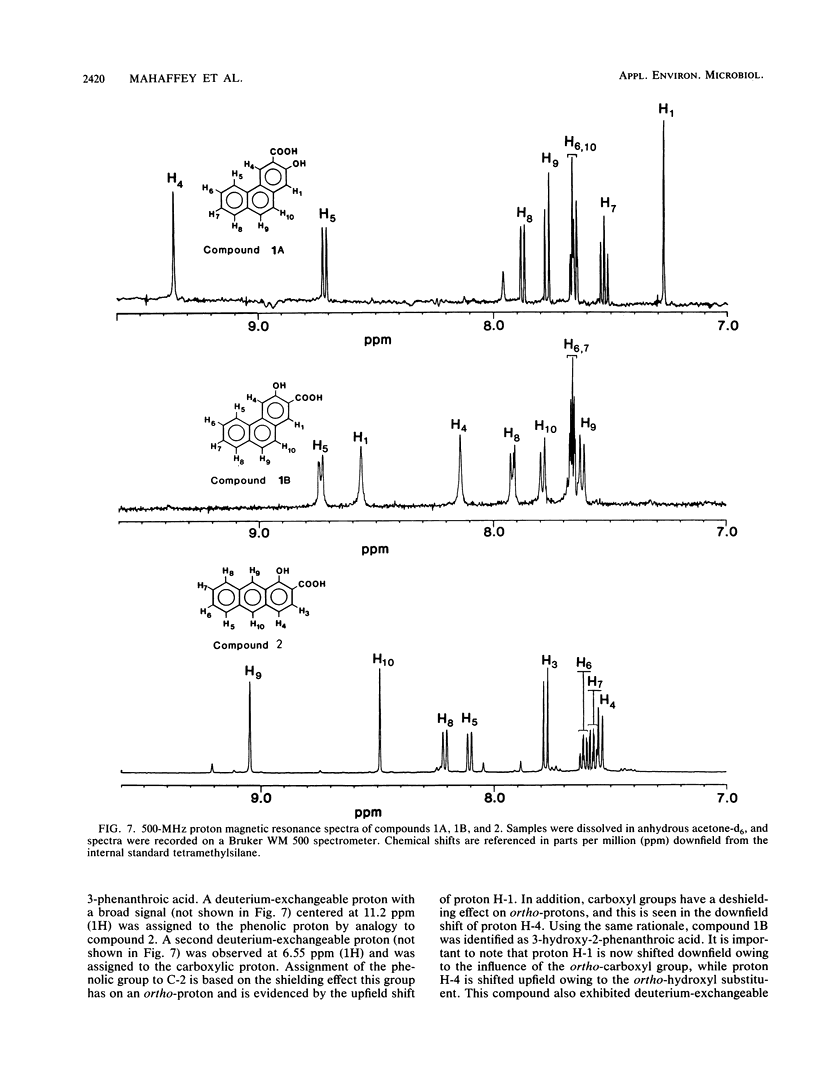
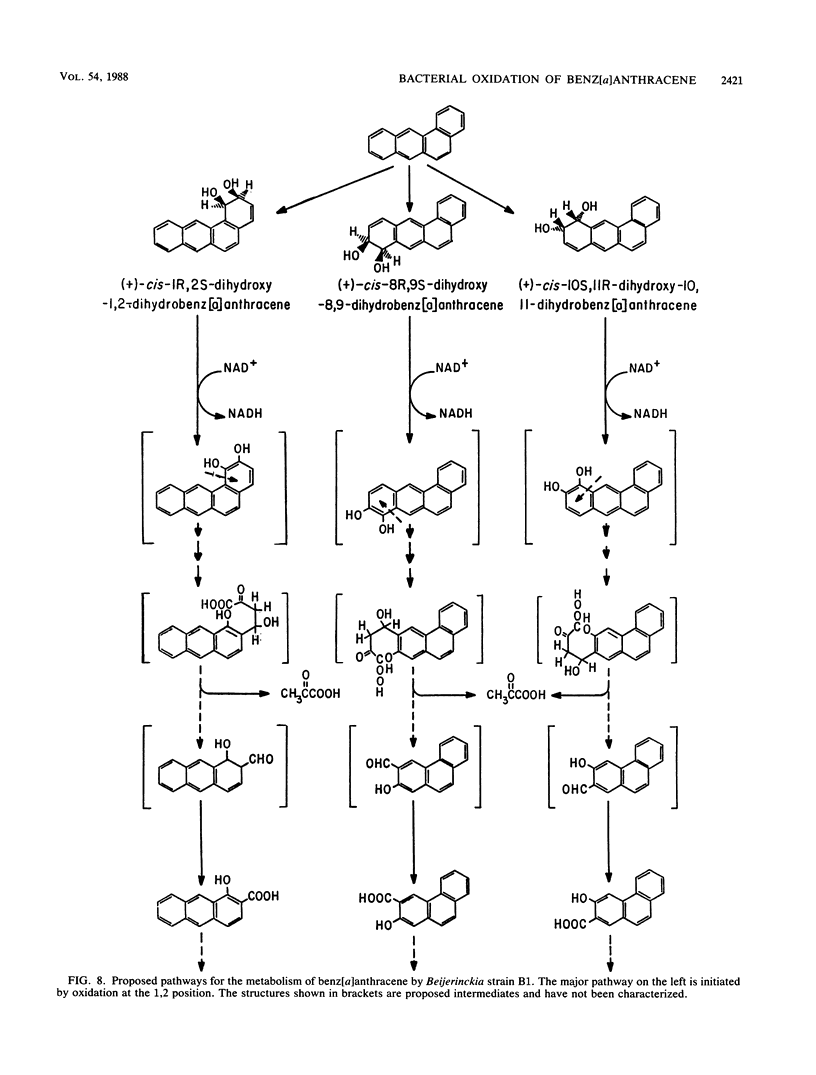
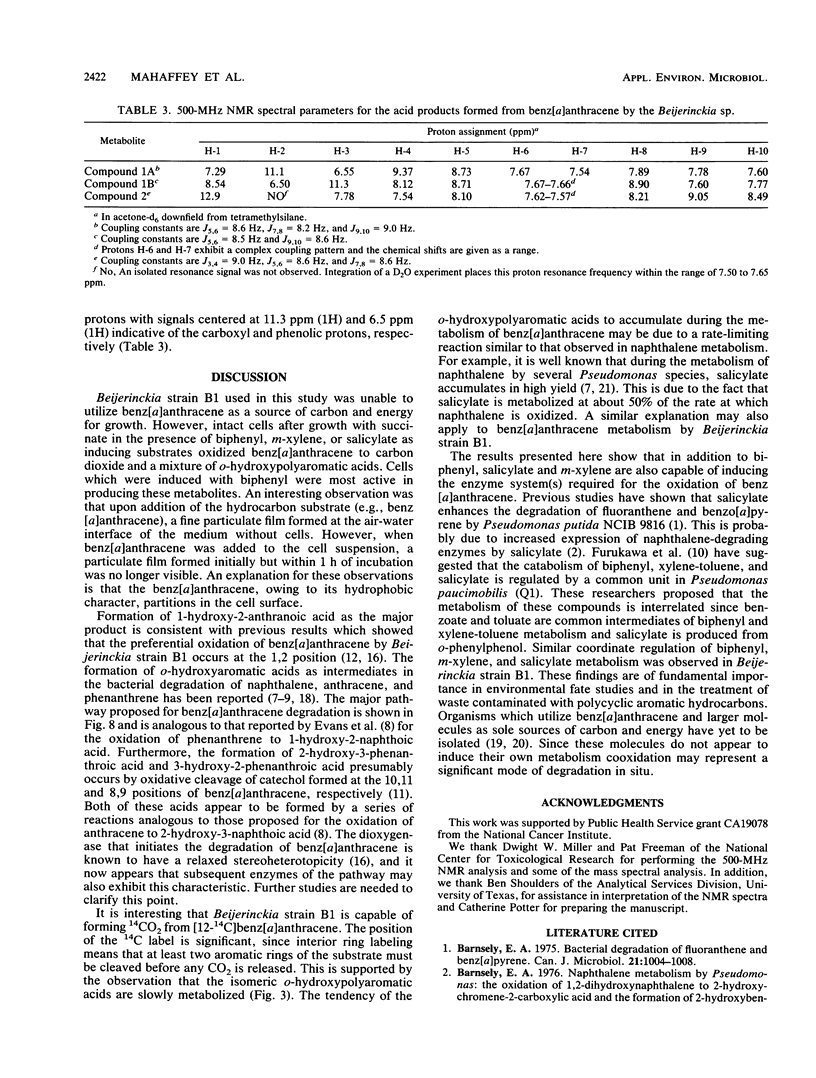
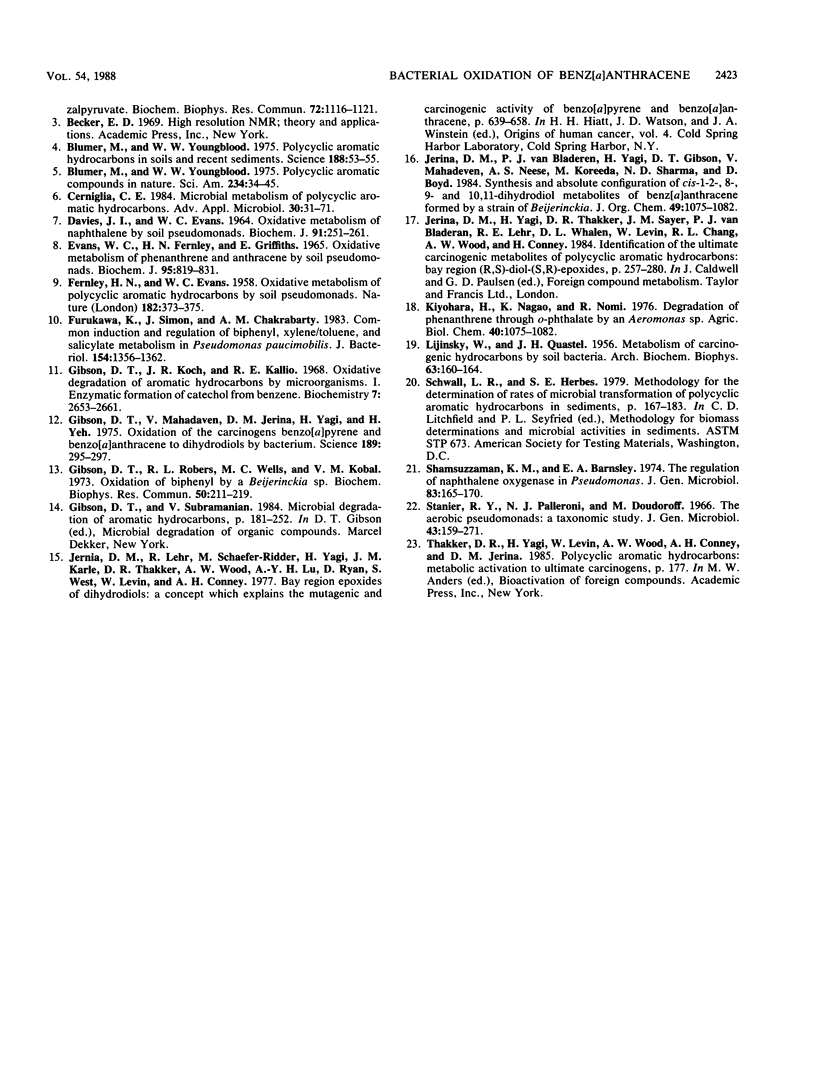
Selected References
These references are in PubMed. This may not be the complete list of references from this article.
- Barnsley E. A. Naphthalene metabolism by pseudomonads: the oxidation of 1,2-dihydroxynaphthalene to 2-hydroxychromene-2-carboxylic acid and the formation of 2'-hydroxybenzalpyruvate. Biochem Biophys Res Commun. 1976 Oct 4;72(3):1116–1121. doi: 10.1016/s0006-291x(76)80247-1. [DOI] [PubMed] [Google Scholar]
- Barnsley E. A. The bacterial degradation of fluoranthene and benzo[alpyrene. Can J Microbiol. 1975 Jul;21(7):1004–1008. doi: 10.1139/m75-148. [DOI] [PubMed] [Google Scholar]
- Blumer M. Polycyclic aromatic compounds in nature. Sci Am. 1976 Mar;234(3):35–45. [PubMed] [Google Scholar]
- Blumer M., Youngblood W. W. Polycyclic aromatic hydrocarbons in soils and recent sediments. Science. 1975 Apr 4;188(4183):53–55. doi: 10.1126/science.188.4183.53. [DOI] [PubMed] [Google Scholar]
- Cerniglia C. E. Microbial metabolism of polycyclic aromatic hydrocarbons. Adv Appl Microbiol. 1984;30:31–71. doi: 10.1016/s0065-2164(08)70052-2. [DOI] [PubMed] [Google Scholar]
- Davies J. I., Evans W. C. Oxidative metabolism of naphthalene by soil pseudomonads. The ring-fission mechanism. Biochem J. 1964 May;91(2):251–261. doi: 10.1042/bj0910251. [DOI] [PMC free article] [PubMed] [Google Scholar]
- EVANS W. C., FERNLEY H. N., GRIFFITHS E. OXIDATIVE METABOLISM OF PHENANTHRENE AND ANTHRACENE BY SOIL PSEUDOMONADS. THE RING-FISSION MECHANISM. Biochem J. 1965 Jun;95:819–831. doi: 10.1042/bj0950819. [DOI] [PMC free article] [PubMed] [Google Scholar]
- FERNLEY H. N., EVANS W. C. Oxidative metabolism of polycyclic hydrocarbons by soil Pseudomonads. Nature. 1958 Aug 9;182(4632):373–375. doi: 10.1038/182373a0. [DOI] [PubMed] [Google Scholar]
- Furukawa K., Simon J. R., Chakrabarty A. M. Common induction and regulation of biphenyl, xylene/toluene, and salicylate catabolism in Pseudomonas paucimobilis. J Bacteriol. 1983 Jun;154(3):1356–1362. doi: 10.1128/jb.154.3.1356-1362.1983. [DOI] [PMC free article] [PubMed] [Google Scholar]
- Gibson D. T., Koch J. R., Kallio R. E. Oxidative degradation of aromatic hydrocarbons by microorganisms. I. Enzymatic formation of catechol from benzene. Biochemistry. 1968 Jul;7(7):2653–2662. doi: 10.1021/bi00847a031. [DOI] [PubMed] [Google Scholar]
- Gibson D. T., Mahadevan V., Jerina D. M., Yogi H., Yeh H. J. Oxidation of the carcinogens benzo [a] pyrene and benzo [a] anthracene to dihydrodiols by a bacterium. Science. 1975 Jul 25;189(4199):295–297. doi: 10.1126/science.1145203. [DOI] [PubMed] [Google Scholar]
- Gibson D. T., Roberts R. L., Wells M. C., Kobal V. M. Oxidation of biphenyl by a Beijerinckia species. Biochem Biophys Res Commun. 1973 Jan 23;50(2):211–219. doi: 10.1016/0006-291x(73)90828-0. [DOI] [PubMed] [Google Scholar]
- LIJINSKY W., QUASTEL J. H. Metabolism of carcinogenic hydrocarbons by soil microorganisms. Arch Biochem Biophys. 1956 Jul;63(1):160–164. doi: 10.1016/0003-9861(56)90019-4. [DOI] [PubMed] [Google Scholar]
- Shamsuzzaman K. M., Barnsley E. A. The regulation of naphthalene oxygenase in pseudomonads. J Gen Microbiol. 1974 Jul;83(0):165–170. doi: 10.1099/00221287-83-1-165. [DOI] [PubMed] [Google Scholar]
- Stanier R. Y., Palleroni N. J., Doudoroff M. The aerobic pseudomonads: a taxonomic study. J Gen Microbiol. 1966 May;43(2):159–271. doi: 10.1099/00221287-43-2-159. [DOI] [PubMed] [Google Scholar]


